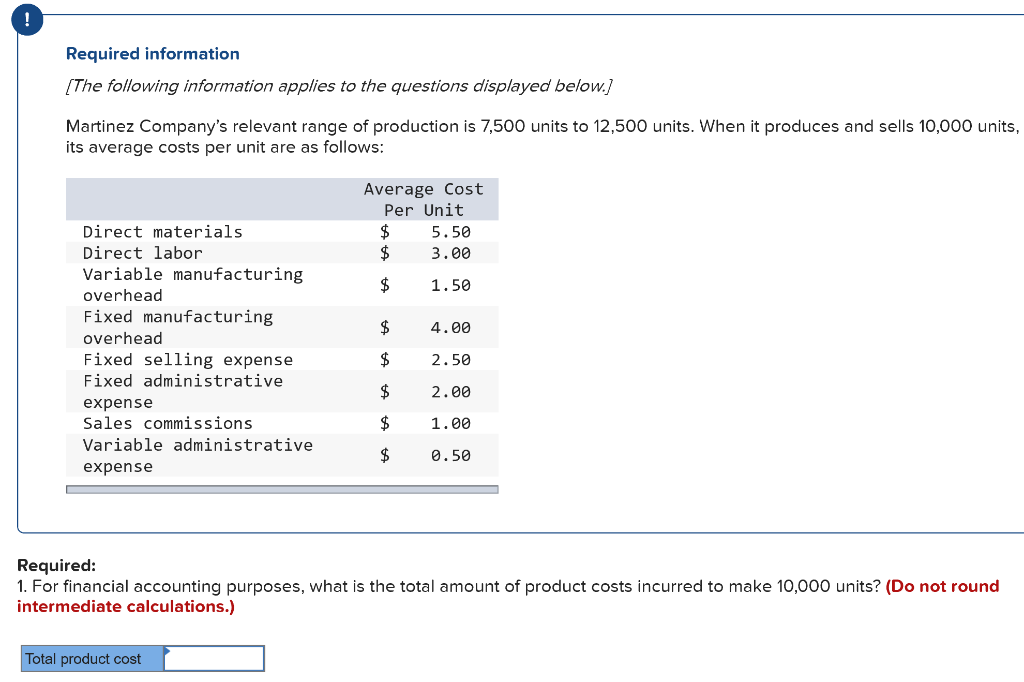
This hypothetical example is simplified, whereas the actual situation could be much more complex. It illustrates the importance of a comprehensive manufacturing cost analysis. By regularly performing such analyses, companies can identify areas for improvement, optimize costs, and ultimately enhance profitability. In manufacturing cost analysis, identifying product cost outliers is a critical exercise. These outliers are the products whose costs deviate significantly from the average or expected costs.
Example #2: Direct labor
Although the fixed manufacturing overhead costs present themselves as large monthly or annual expenses, they are part of each product’s cost. Accountants categorize manufacturing companies’ operating costs as fixed manufacturing overhead costs and variable manufacturing costs. Companies’ fixed overhead costs vary widely, depending on the nature of the business and how management defines fixed expenses. Fixed costs differ from variable costs in that they do not change with the level of production or sales activity. Variable costs, on the other hand, fluctuate directly with the volume of production.

#5 – Interest Expense
In the absence of any fixed costs, the profit would fall and rise in line with Sales Revenues. Fixed costs may be direct operating costs (directly involved in the manufacturing / sales process), indirect or financial. Total fixed costs are shown by a straight line drawn parallel to the x-axis because fixed costs do not respond to changes in volume or activity. A fixed cost will change over time due to situational factors that are not impacted by a firm’s activity (e.g., rent or taxes may change). “When a manufacturer begins the production process, the costs incurred to create the products are initially recorded as assets in the form of WIP inventory. As the manufacturing process involves raw materials and finished goods, all of these are considered assets.
What are material costs in manufacturing?
Falling under the category of cost of goods sold (COGS), your total variable cost is the amount of money you spend to produce and sell your products or services. That includes labor costs (direct labor) and raw materials (direct materials). Fixed costs are expenses that do not change as production levels change. Unlike fixed costs, variable costs (e.g., shipping) change based on a company’s production levels. Fixed costs are a type of expense or cost that remains unchanged with an increase or decrease in the volume of goods or services sold. They are often time-related, such as interest or rents paid per month, and are often referred to as overhead costs.
- On the other hand, variable costs are considered volume-related as they change with the output.
- It not only includes the cost of materials and labor, but also both variable and fixed manufacturing overhead costs.
- Strategies for reducing manufacturing costs include process optimization, supplier negotiation, technology investment, and product redesign.
- In manufacturing cost analysis, identifying product cost outliers is a critical exercise.
- In addition, absorption costing takes into account all costs of production, such as fixed costs of operation, factory rent, and cost of utilities in the factory.
- While variable costs tend to remain flat, the impact of fixed costs on a company’s bottom line can change based on the number of products it produces.
Cost Accounting
Therefore, variable costing is used instead to help management make product decisions. A portion of these fixed manufacturing overhead costs must be allocated to each apron produced. This is known as absorption costing and it explains why some accountants say that each product must “absorb” a portion of the fixed manufacturing overhead costs.
Should product costing be broken into a fixed and variable portion for analysis over 1 lump sum cost?
By calculating manufacturing costs, manufacturers can better understand the elements that are driving up costs while identifying the most economical way to manufacture a product. Fluctuation of costs is yet another challenge that makes it harder to calculate manufacturing costs accurately, according to Fabrizi. No, manufacturing cost analysis is crucial for businesses of all sizes. It can be even more critical for small and medium-sized enterprises as they often operate on thinner margins and have less room for error. Understanding the true cost of manufacturing is essential for setting accurate pricing strategies. It helps determine the minimum price required to cover all costs and achieve the desired profit margin.
Quickonomics provides free access to education on economic topics to everyone around the world. Our mission is to empower people to make better decisions for their personal success and the benefit of society. The cost of using various utilities, such as electricity, gas, phone, internet, and telephone, is generally fixed.
Now that you are familiar with the components that constitute manufacturing costs, let’s move on to the process of calculating these expenses. The frequency of manufacturing cost analysis depends on the nature and scale of the business. However, performing this analysis at least quarterly is advisable to align with financial reporting periods.
In manufacturing, the total cost of direct labor, raw materials, and facility upkeep will take the biggest bite out of your revenue. Whether the demand for a particular company’s products/services (and production volume) is above or below management expectations, these types of costs remain the same. A manufacturer of treadmills produces at a variable cost per unit of $500 with fixed costs of $10,000 per quarter. For instance, if the manufacturing costs are too high, these costs can create a dent in the company’s profit. In this case, the management can decide to stop the production of some goods and invest in developing new ones that have a lower cost of production.
Independent cost structure analysis helps a company fully understand its fixed and variable costs and how they affect different parts of the business, as well as the total business overall. Many companies have cost analysts fixed manufacturing costs dedicated solely to monitoring and analyzing a business’s fixed and variable costs. Semi-variable costs are composed of fixed and variable components, which means they are fixed for a certain production level.
We follow strict ethical journalism practices, which includes presenting unbiased information and citing reliable, attributed resources. At Finance Strategists, we partner with financial experts to ensure the accuracy of our financial content. Here, the concept of the relevant range is critical; it refers to the range of activity that the company expects to operate in. Clockify is a time tracker and timesheet app that lets you track work hours across projects. A project cost overrun happens when the project costs exceed the budget estimate.